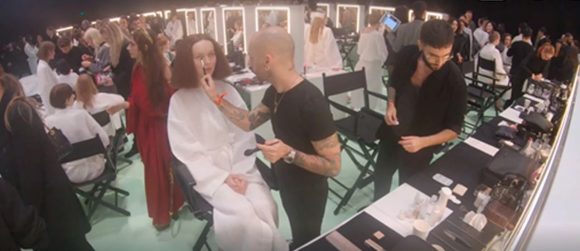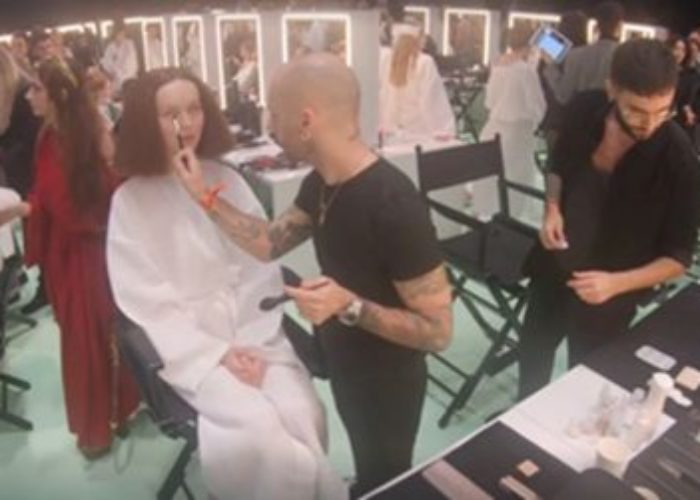Live-streaming in China: luxe dives in, some slip a little
If you’re at all in-tune with Chinese beauty retail, then you most certainly would have heard of the infamous Rouge Hermès Incident involving widely-proclaimed lipstick king Li Jiaqi (李佳琦) giving a scathing review of the much-anticipated lipstick line from the emperor of le French touch (read “gratifyingly expensive”). Though a seriously spicy dish, we’re not going to delve into that hot mess of an incident – when you’re done Googling, please come back because there was a point to bringing that up.
Back? Ok, so the point is, live-streaming is a big deal in China, and the Covid-19 pandemic has nudged some luxury brands into this mystical, influencer-ruled realm where the laws of physics conventional retail marketing don’t track.
YSL Beauté
First we have lipstick; for many they’re a relatively affordable status symbol; they’re small, fun, and desperate wannabes – including yours truly – pop them like M&Ms; I mean can you even be legally certified as a woman if you don’t possess at least 3 (hundred)?
YSL Beauté carpe diem’ed the ass out of their day with a staged livestream showcase on insanely popular marketplace Taobao Live. A baker’s dozen of influencers, models and presenters spent the hour talking up various box-sets of poppy shades of rouge. In terms of effort, there’s a solid A in there! That set, the cameras, lighting and all those influencers don’t come cheap. Just shy of 2 million viewers tuned in, many followers of the mini-celebrities. Each time an item is sold, a bright orange message pops up onscreen, “XXX0483 is making a purchase!” We saw many-a-message that evening. With prices hovering above 300 RMB per, there’s definitely room for lucrative happiness however we can’t help but ponder the long-term effectiveness and viability of mega influencers-led showcases.

Moving on to fashion shows, Giorgio Armani famously walked onto his runway to greet an invisible crowd in his latest show. Due to the mounting Covid-19 crisis in Italy, no audience could attend the Milan show. Armani is not alone.

Gucci
With Dolce & Gabbana’s whirlwind tumble from grace involving a model, a pizza and a pair of chopsticks and Versace’s uninspired fumble with t-shirts printed with store locations (seriously, was that actually meant for paying customers?), Gucci is left il re della collina (king of the hill), so to speak. The brand’s arguably more Darwinian marketing aptitude was put to good use in a recent venture into live-streaming. On February 19th at 10:00pm Beijing time, Gucci broadcasted its runway show live on Weibo, #GucciTheRitual, showcasing the 2020 Fall/Winter collection. At a mere 10 minutes 13 seconds, the micro livestream managed to reach 22.9 million Chinese users (including replay viewers). Not bad François, HEC 4ever. Let’s move on.

Lanvin
The Chinese-owned (Fosun) Lanvin also dabbled with runway live-streaming. Although Fosun is quite a ways larger than a PE fund, in typical PE-backed fashion, no pun intended, Lanvin went all out, blank check in-hand, broadcasting their show in jaw-dropping live 360° VR format via streaming platform iQiyi.com – China’s answer to Netflix. The VR headsets, provided by iQiyi to subscribers of its VR content service, put viewers next to Chinese online A-listers, with the option to hear their voice-over commentary.
Bottom line, we’re not quite sure what to make of it all, indeed there’s so much that’s new and inspiring about this approach, however partnering with a content-driven platform like iQiyi instead of a commercial one like Taobao and delivering through VR goggles may be limiting potential marketing reach, or not, what does McKinsey say?

Shanghai Fashion Week
Lastly, while not a brand, worthy of an honorable mention is Shanghai Fashion Week. Official partner Xintiandi teamed up with Tmall (Taobao’s sister marketplace) and basically all of China’s leading content platforms – Bilibili, RED (小红书), TikTok, Kuaishou(快手) – to host a cloud marketplace. Influencers took viewers on walkabout tours through and interviews about home-grown designers. Purchases could be made instantly via Tmall.

Nothing goes perfectly in uncharted waters. While YSL and Gucci are relishing in the success of their first dips into the livestream, pun intended, other brands seemed to have gone too fast and slipped-up a little.
Louis Vuitton
This year’s Gold Lion for Social Disengagement & Disintegration for Live Experience (FYI, that’s B01 at Cannes, wink) goes to… Louis Vuitton. Sorry, Bernard.
In what can only be described as the execution of a half-formed thought from somebody driven to desperation by quarantine, Louis Vuitton’s ill-fated livestream on RED (小红书), left viewers frozen in disbelief. Instead of a staged approach, the mega-brand opted to broadcast a live-selling session in the classic “直播间” (livestream showroom) format, thus-far a proven business model for middle-aged merchants of surplus apparel stockpiles in the outskirts of Suzhou.
The choice of pieces was a chaotic, vertigo-inducing explosion of everything monogramed from canvas bags, to shorts to sneakers and scarves; when we looked at the backs of our hand we could still see Jesus the LV sign. As if that wasn’t enough kitsch for one lifetime, the styling of the poor girls drew up repressed memories of Honey Boo Boo. Cap it off with a no-frills set that somehow made its way over from 1960’s Deauville, and finally the writing on the wall became clear, “catastrophic consumer backlash up ahead”. Screenshots below, we’ll let you be the judge.

Burberry
And then there was one. Sometimes equipment just fails us. Janet had the wardrobe malfunction, Enrique had a disastrous relationship with a live mic and Burberry had, well nothing really, no, literally nothing. The April 9th Taobao Live showcase was supposed to air at 9:00pm sharp with influencers billing in the six-figures expected to join, including Yvonne Ching. One hour and a couple dozen messages to customer service later, we gave up and went to bed (writing articles requires a lot of sleep). Apparently due to “technical issues”, the live broadcast would be delayed to a later date. 11 days on and we’re still waiting.

There’s far too many more case studies than one god-fearing (Thor) writer should dare to tackle in a single piece. Honorable mentions also go out to Ahava x Tmall live from the Dead Sea, MCM’s in-store broadcasts on RED (小红书), Calvin Klein’s 360° VR pop-up cloud store and Prada x TikTok’s #“P”oems.

While there are many platforms who have facilitated brands’ explorative endeavors into the world of live-streaming, Alibaba-backed Taobao/Tmall clearly emerged as the de-facto platform of choice. Astonishingly, the Tencent-backed JD.com was nowhere to be found.
We can guesstimate 3 reasons:
1. Taobal/Tmall often acted as co-hosts or sponsors to these live-streaming events.
2. Taobao/Tmall is a huge, merchant-driven marketplace, especially popular among small, independent retailers/manufacturers of apparel, accessories & beauty, thereby drawing in huge impuse buyers. Contrast that with JD.com, who is recognized as a more structured marketplace for branded products and established (read “licensed“) merchants, an Amazon of sorts, with a tendency to skew towards consumer electronics and groceries.
3. While some of the other broadcasting platforms, notably RED (小红书), do offer a marketplace feature whereby viewers can directly proceed to purchase, Taobal/Tmall’s payment escrow system, buyer protection and merchant vetting features are a big draw.
Post-Covid 19 and with increasing 5G coverage, will we see brands continue to gravitate towards live-streaming as a sustainable new marketing avenue? Only time will tell.


